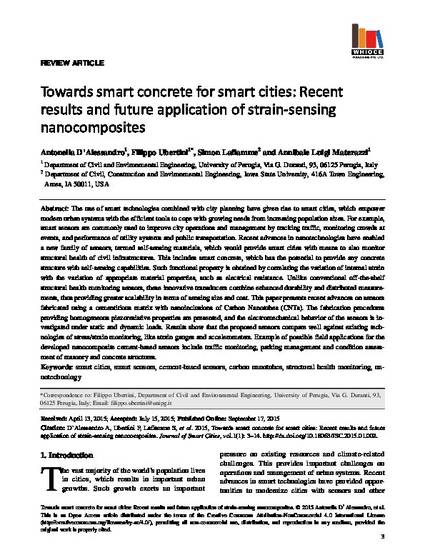
The use of smart technologies combined with city planning have given rise to smart cities, which empower modern urban systems with the efficient tools to cope with growing needs from increasing population sizes. For example, smart sensors are commonly used to improve city operations and management by tracking traffic, monitoring crowds at events, and performance of utility systems and public transportation. Recent advances in nanotechnologies have enabled a new family of sensors, termed self-sensing materials, which would provide smart cities with means to also monitor structural health of civil infrastructures. This includes smart concrete, which has the potential to provide any concrete structure with self-sensing capabilities. Such functional property is obtained by correlating the variation of internal strain with the variation of appropriate material properties, such as electrical resistance. Unlike conventional off-the-shelf structural health monitoring sensors, these innovative transducers combine enhanced durability and distributed measurements, thus providing greater scalability in terms of sensing size and cost. This paper presents recent advances on sensors fabricated using a cementitious matrix with nanoinclusions of Carbon Nanotubes (CNTs). The fabrication procedures providing homogeneous piezoresistive properties are presented, and the electromechanical behavior of the sensors is investigated under static and dynamic loads. Results show that the proposed sensors compare well against existing technologies of stress/strain monitoring, like strain gauges and accelerometers. Example of possible field applications for the developed nanocomposite cement-based sensors include traffic monitoring, parking management and condition assessment of masonry and concrete structures.
Available at: http://works.bepress.com/simon_laflamme/37/

This article is from Journal of Smart Cities, 2015, 1(1); 3-14. DOI: 10.18063/JSC.2015.01.002. Posted with permission.